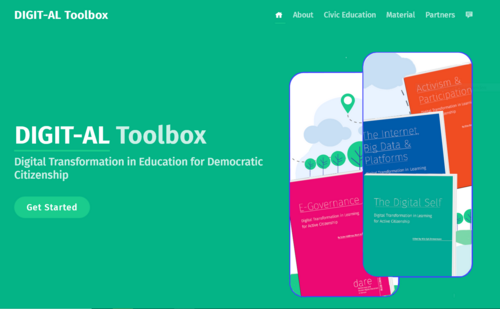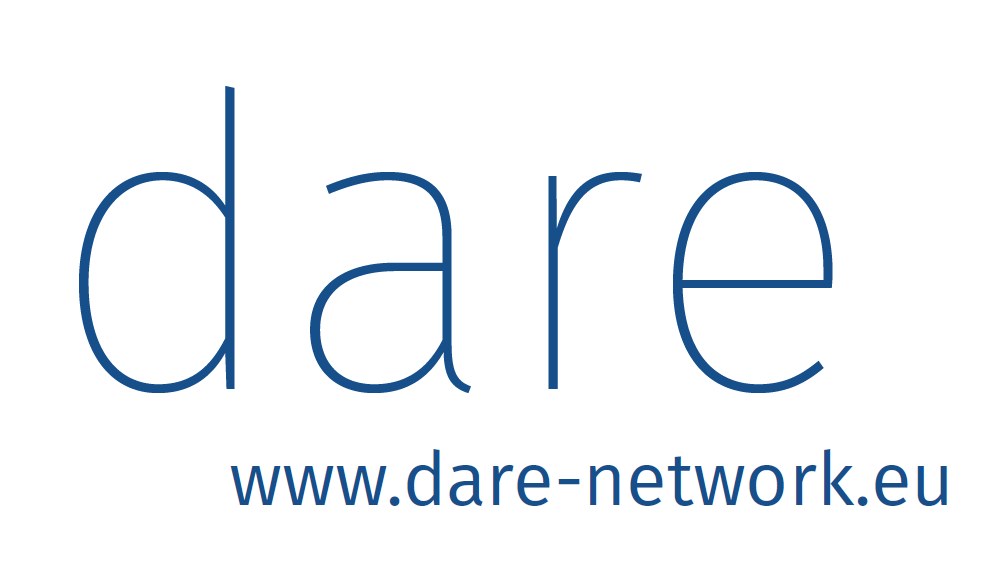Contents
- 1 Learning across Institutional Boundaries and across Ages
- 2 Giving Orientation in Fluidity
- 3 Orientation at the Learners' Strengths
- 4 Making Non-formal and Informal Learning Explicit
- 5 Helping to Understand Relations between Different Systems and Frameworks
- 6 Description, Reflection and Assessment of Learning Outcome
- 7 A Critical View...
- 8 ...And How They Support Non-formal Education
- 9 References
Learning across Institutional Boundaries and across Ages
Learning can take place everywhere, at any age and in any situation. Successful and relevant application of learning happens when individuals activate and apply their knowledge, attitudes and skills in a specific situation. Knowledge, skills and attitudes complete and support each other and by doing so they can help people to master complex challenges in private, social and professional life situations.
From a lifelong learning perspective, it is a short time people spend in education institutions. But does learning stop afterwards? Probably not. Even those that do not engage in further formal learning, will very often be learning "informally": The term describes "forms of learning that are intentional or deliberate but are not institutionalized" [1]
Outside of formal learning settings such as in schools, colleges or universities people continue with their self-development. We learn in school, in society, in the job, in families, through books, in training, and in civil engagement. The combination of informal learning with a conscious decision to learn is considered to be very effective. This kind of learning is non-formal : “Learning which is embedded in planned activities not explicitly designated as learning (in terms of learning objectives, learning time or learning support). Non-formal learning is intentional from the learner’s point of view.”[2]
Especially learning of initiative, proactivity or other transversal competences is appearing in an interplay of different activities and experiences, taking place in dedicated learning spaces, as well as during selflearning or in situations where learning was not intended.
Giving Orientation in Fluidity
Competence frameworks are tools for giving orientation to educators and learners also in absence of the chapter structure of a schoolbook. Instead of following a too strong topical logic, the golden thread in a competence centered approach is the individual ability. Instead of thinking about – what elements do I have to teach? The question shifts rather to: “What should learners be able to afterwards?” From the learner's perspective, the legitimate goal of having a say in what one considers relevant comes to the fore.
This does not mean that content is less important. Rather the idea of competence-centered learning responds to the fact, that learning is more effective when treated as a non-linear process involving head, heart and hand (knowledge, attitude skills dimension in the same way), taking place in an area between theoretical reasoning and practical experience, and practised in a mix of individual and social forms. Reflection is recognised as crucial, providing a constructive approach to challenges and failures, and building the learners’ ability to perceive and treat cognitive-emotional-practical real life situations as learning opportunities.
Orientation at the Learners' Strengths
Adopting such an approach can shift the focus toward the individual learners‘ strengths . The question arising from such a resource-oriented (instead deficitoriented) perspective are: What exactly are they doing well? Where exactly do they see potential or feel a need for improvement?
The goal is to achieve strong learners, and a focus on what they can do rather than what they are not able to. This also requires that educators or teachers need to understand their role as facilitators.
Competence-centered learning allows and demands, at the same time, the educator or teacher to consider themselves as (continuous) learners and teaching process as a learning experience.
Making Non-formal and Informal Learning Explicit
So, the challenge for educators is to compose learning designs that are giving these aspects appropriate attention, that provide rich learning opportunities that are embedded in to the curriculum or the learning activity. Competence frameworks help to make this learning explicit. The definition and descriptions of competences helps educators and learners to grasp the challenge, to describe the growth and to reflect on the learning journey.
Helping to Understand Relations between Different Systems and Frameworks
Competences are transversal , that is, they are useful in different situations. For example, an EntreComp competence is “creativity” which is relevant to different situations and therefore in other competence frameworks. There is no single competence framework that includes all transversal competences, so educators and facilitators may need to develop learning activities, which pull together ingredients from different competence frameworks to meet the specific learning goals of their organization or education institution to make a meaningful whole.
This requires systems thinking approach where we learn how things relate and interact, and helps to understand the nature of a competence better. This is integral to the EntreComp framework, with the 15 competences recognised as being “interrelated and interconnected and should be treated as parts of a whole” .
Description, Reflection and Assessment of Learning Outcome
A competence-based description of learning goals and outcome helps educators and learners alike to (self-)assess, recognize and describe competence level and to progress through a learning process more precisely, as it invites close consideration of individual strengths and areas for development.
Underpinning the learning process a competence framework can provide a good frame for regular reflection as well as for assessment. Learners can better explain their strengths and experience to others by describing specific examples of how they have demonstrated competences in different situations.
Written descriptions are usually based on a dialogue / reflection between the learner and educator carried out throughout the learning journey over several steps, and involving self-reflection and feedback. Examples of this in practice are
Inspiring Examples
- Youthpass,
- or for educators in the GRETA model,
- the Council of Europe Youth Work Portfolio Tool,
- the SALTO ETS Competence Model for Trainers
- or the SALTO ETS Competence Model for Youth Workers to Work Internationally.
- SALTO’s Booklet Tools to get started is designed to inspire educators to make use of competence frameworks in different ways for themselves – and also for learners.
Following a learning activity, a competence description provides a realistic and richer picture of a learner’s abilities, adding value and depth of understanding to a certificate of achievement. It also enables learners to better explain their capacities and experience to others when they understand the concept of competences (exemplary: Competendo’s template).
A Critical View...
We must admit that certain assumptions behind the development of many competence frameworks seem to be less relevant in non-formal settings.
- Non-formal learning does not usually lead to validation and certification.
- It is also not aiming to deliver learning experiences that must be comparable across education policy boundaries and systems.
- Furthermore, training and seminars don’t follow a curriculum or take place over a long course, so that it is not realistic to assume that all competences in a framework can be addressed as systematically as in formal education.
- Finally, non-formal learning involves specific topics, tackles different competence frameworks, often has a transversal nature and is sometimes a process where the development of competences takes place in an open way – what learners learn might be negotiated or explored during the process and is not planned in too much detail in advance.
...And How They Support Non-formal Education
That being said, we do recommend that facilitators in non-formal education explore the world of competence frameworks, despite not being the primary targets of them:
- Competence frameworks are tools for giving orientation to educators and learners in absence of the chapter structure of a schoolbook. As opposed to providing a strong topical guidelines, they remind educators to focus on individual needs and abilities. Instead of thinking about “what elements do I have to teach?”, the question shifts rather to, “what should learners be able to do afterwards?”
- A competence-based description of learning goals and outcomes helps educators and learners alike to (self-)assess, recognize and describe competence level and to progress through a learning process more precisely, as it invites close consideration of individual strengths and areas for development. Competence frameworks might offer guidance in (self-)description and recognition of non-formally acquired competences and must not be used necessarily for formal validation.
- Competences are transversal, that is, they are useful in different situations. There is no single competence framework that includes all transversal competences, so educators and facilitators may need to develop learning activities which pull together ingredients of different competence frameworks to meet the specific learning goals of their organization or education institution to make a meaningful whole.
- This requires a systemic thinking approach where we learn how things relate and interact, and helps to understand the nature of a competence better. In this sense, competence frameworks can also be considered as systematic catalogues.
- And finally, they complement other forms of describing dimensions aside from competence-centered learning, in the form seminar plans, concept notes, etc. Educators have the freedom to identify the form that best fits the needs of the learner.
References
- ↑ UNESCO-UNEVOC Centre for technical and vocational education and training. TVETipedia Glossary.
- ↑ Terminology of European Education and Training Policy: a selection of 100 key terms (Luxembourg); https://doi.org/10.2801/15877
Digital Transformation in Adult Learning for Active Citizenship
This text was published in the frame of the project DIGIT-AL - Digital Transformation Adult Learning for Active Citizenship.









